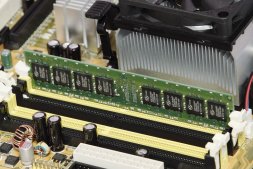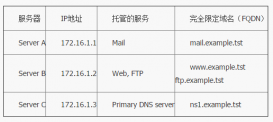本文主要对Linux下的多线程进行一个入门的介绍,虽然是入门,但是十分详细,希望大家通过本文所述,对Linux多线程编程的概念有一定的了解。具体如下。
1 线程基本知识
进程是资源管理的基本单元,而线程是系统调度的基本单元,线程是操作系统能够进行调度运算的最小单位,它被包含在进程之中,是进程中的实际运作单位。一条线程指的是进程中一个单一顺序的控制流,一个进程中可以并发多个线程,每条线程并行执行不同的任务。
一个进程在某一个时刻只能做一件事情,有了多个控制线程以后,在程序的设计成在某一个时刻能够做不止一件事,每个线程处理独自的任务。
需要注意的是:即使程序运行在单核处理器上,也能够得到多线程编程模型的好处。处理器的数量并不影响程序结构,所以不管处理器个数多少,程序都可以通过线程得以简化。
linux操作系统使用符合POSIX线程作为系统标准线程,该POSIX线程标准定义了一整套操作线程的API。
2. 线程标识
与进程有一个ID一样,每个线程有一个线程ID,所不同的是,进程ID在整个系统中是唯一的,而线程是依附于进程的,其线程ID只有在所属的进程中才有意义。线程ID用pthread_t表示。
|
1
2
3
|
//pthread_self直接返回调用线程的IDinclude <pthread.h>pthread_t pthread_self(void); |
判断两个线程ID的大小是没有任何意义的,但有时可能需要判断两个给定的线程ID是否相等,使用以下接口:
|
1
2
3
|
//pthread_equal如果t1和t2所指定的线程ID相同,返回0;否则返回非0值。include <pthread.h>int pthread_equal(pthread_t t1, pthread_t t2); |
3. 线程创建
一个线程的生命周期起始于它被创建的那一刻,创建线程的接口:
|
1
2
3
|
#include <pthread.h>int pthread_create(pthread_t *thread, const pthread_attr_t *attr, void *(*start_routine) (void *), void *arg); |
函数参数:
|
1
2
3
4
|
thread(输出参数),由pthread_create在线程创建成功后返回的线程句柄,该句柄在后续操作线程的API中用于标志该新建的线程; start_routine(输入参数),新建线程的入口函数; arg(输入参数),传递给新线程入口函数的参数; attr(输入参数),指定新建线程的属性,如线程栈大小等;如果值为NULL,表示使用系统默认属性。 |
函数返回值:
|
1
2
|
成功,返回0; 失败,返回相关错误码。 |
需要注意:
1.主线程,这是一个进程的初始线程,其入口函数为main函数。
2.新线程的运行时机,一个线程被创建之后有可能不会被马上执行,甚至,在创建它的线程结束后还没被执行;也有可能新线程在当前线程从pthread_create前就已经在运行,甚至,在pthread_create前从当前线程返回前新线程就已经执行完毕。
程序实例:
|
1
2
3
4
5
6
7
8
9
10
11
12
13
14
15
16
17
18
19
20
21
22
23
24
25
26
27
28
29
30
|
#include <stdio.h>#include <stdlib.h>#include <pthread.h>#include <unistd.h>void printids(const char *s){ pid_t pid; pthread_t tid; pid = getpid(); tid = pthread_self(); printf("%s, pid %lu tid %lu (0x%lx)\n",s,(unsigned long)pid,(unsigned long)tid, (unsigned long)tid);}void *thread_func(void *arg){ printids("new thread: "); return ((void*)0);}int main() { int err; pthread_t tid; err = pthread_create(&tid,NULL,thread_func,NULL); if (err != 0) { fprintf(stderr,"create thread fail.\n"); exit(-1); } printids("main thread:"); sleep(1); return 0;} |
注意上述的程序中,主线程休眠一秒,如果不休眠,则主线程不休眠,则其可能会退出,这样新线程可能不会被运行,我自己注释掉sleep函数,发现好多次才能让新线程输出。
编译命令:
|
1
|
gcc -o thread thread.c -lpthread |
运行结果如下:
|
1
2
|
main thread:, pid 889 tid 139846854309696 (0x7f30a212f740)new thread: , pid 889 tid 139846845961984 (0x7f30a1939700) |
可以看到两个线程的进程ID是相同的。其共享进程中的资源。
4. 线程终止
线程的终止分两种形式:被动终止和主动终止
被动终止有两种方式:
1.线程所在进程终止,任意线程执行exit、_Exit或者_exit函数,都会导致进程终止,从而导致依附于该进程的所有线程终止。
2.其他线程调用pthread_cancel请求取消该线程。
主动终止也有两种方式:
1.在线程的入口函数中执行return语句,main函数(主线程入口函数)执行return语句会导致进程终止,从而导致依附于该进程的所有线程终止。
2.线程调用pthread_exit函数,main函数(主线程入口函数)调用pthread_exit函数, 主线程终止,但如果该进程内还有其他线程存在,进程会继续存在,进程内其他线程继续运行。
线程终止函数:
|
1
2
|
include <pthread.h>void pthread_exit(void *retval); |
线程调用pthread_exit函数会导致该调用线程终止,并且返回由retval指定的内容。
注意:retval不能指向该线程的栈空间,否则可能成为野指针!
5. 管理线程的终止
5.1 线程的连接
一个线程的终止对于另外一个线程而言是一种异步的事件,有时我们想等待某个ID的线程终止了再去执行某些操作,pthread_join函数为我们提供了这种功能,该功能称为线程的连接:
|
1
2
|
include <pthread.h>int pthread_join(pthread_t thread, void **retval); |
参数说明:
|
1
2
|
thread(输入参数),指定我们希望等待的线程 retval(输出参数),我们等待的线程终止时的返回值,就是在线程入口函数中return的值或者调用pthread_exit函数的参数 |
返回值:
|
1
2
|
成功时,返回0 错误时,返回正数错误码 |
当线程X连接线程Y时,如果线程Y仍在运行,则线程X会阻塞直到线程Y终止;如果线程Y在被连接之前已经终止了,那么线程X的连接调用会立即返回。
连接线程其实还有另外一层意义,一个线程终止后,如果没有人对它进行连接,那么该终止线程占用的资源,系统将无法回收,而该终止线程也会成为僵尸线程。因此,当我们去连接某个线程时,其实也是在告诉系统该终止线程的资源可以回收了。
注意:对于一个已经被连接过的线程再次执行连接操作, 将会导致无法预知的行为!
5.2 线程的分离
有时我们并不在乎某个线程是不是已经终止了,我们只是希望如果某个线程终止了,系统能自动回收掉该终止线程所占用的资源。pthread_detach函数为我们提供了这个功能,该功能称为线程的分离:
|
1
2
|
#include <pthread.h>int pthread_detach(pthread_t thread); |
默认情况下,一个线程终止了,是需要在被连接后系统才能回收其占有的资源的。如果我们调用pthread_detach函数去分离某个线程,那么该线程终止后系统将自动回收其资源。
|
1
2
3
4
5
6
7
8
9
10
11
12
13
14
15
16
17
18
19
20
21
22
23
24
25
26
27
28
29
30
31
32
33
34
35
36
37
38
39
40
41
42
43
44
45
46
47
48
49
50
51
52
53
54
55
56
57
58
59
60
61
62
63
64
65
66
67
68
69
70
71
72
|
/** 文件名: thread_sample1.c* 描述:演示线程基本操作*/#include <stdio.h>#include <stdlib.h>#include <unistd.h>#include <pthread.h>/*子线程1入口函数*/void *thread_routine1(void *arg){ fprintf(stdout, "thread1: hello world!\n"); sleep(1); /*子线程1在此退出*/ return NULL;}/*子线程2入口函数*/void *thread_routine2(void *arg){ fprintf(stdout, "thread2: I'm running...\n"); pthread_t main_thread = (pthread_t)arg; /*分离自我,不能再被连接*/ pthread_detach(pthread_self()); /*判断主线程ID与子线程2ID是否相等*/ if (!pthread_equal(main_thread, pthread_self())) { fprintf(stdout, "thread2: main thread id is not equal thread2\n"); } /*等待主线程终止*/ pthread_join(main_thread, NULL); fprintf(stdout, "thread2: main thread exit!\n"); fprintf(stdout, "thread2: exit!\n"); fprintf(stdout, "thread2: process exit!\n"); /*子线程2在此终止,进程退出*/ pthread_exit(NULL);}int main(int argc, char *argv[]){ /*创建子线程1*/ pthread_t t1; if (pthread_create(&t1, NULL, thread_routine1, NULL)!=0) { fprintf(stderr, "create thread fail.\n"); exit(-1); } /*等待子线程1终止*/ pthread_join(t1, NULL); fprintf(stdout, "main thread: thread1 terminated!\n\n"); /*创建子线程2,并将主线程ID传递给子线程2*/ pthread_t t2; if (pthread_create(&t2, NULL, thread_routine2, (void *)pthread_self())!=0) { fprintf(stderr, "create thread fail.\n"); exit(-1); } fprintf(stdout, "main thread: sleeping...\n"); sleep(3); /*主线程使用pthread_exit函数终止,进程继续存在*/ fprintf(stdout, "main thread: exit!\n"); pthread_exit(NULL); fprintf(stdout, "main thread: never reach here!\n"); return 0;} |
最终的执行结果如下:
|
1
2
3
4
5
6
7
8
9
10
|
thread1: hello world!main thread: thread1 terminated!main thread: sleeping...thread2: I'm running...thread2: main thread id is not equal thread2main thread: exit!thread2: main thread exit!thread2: exit!thread2: process exit! |
总结
以上就是本文关于Linux多线程编程快速入门的全部内容,希望对大家有所帮助。感兴趣的朋友可以继续参阅本站其他相关专题,如有不足之处,欢迎留言指出。感谢朋友们对本站的支持!
原文链接:http://blog.csdn.net/taoyanqi8932/article/details/56288950
















